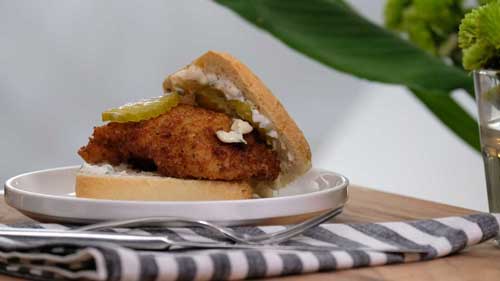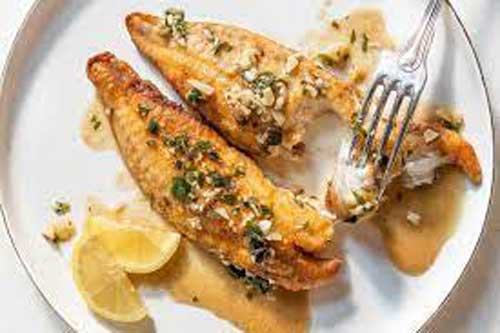Charles Mill Lake Fishing Guide

Click here to download a free copy
Charles Mill Lake, located 4 miles east of Mansfield, Ohio, is home to a wide variety of freshwater fish and year-round fishing opportunities. Over 1,300 acres of lake offer diverse fishing spots that attract some of Ohio's most popular sportfish. This guide will provide you with information on how to catch all of the major species found within our lake.
Charles Mill Marina offers pontoon boat, fishing boat and kayak rentals. Click here to visit our boat rental page and reserve your rental online.
Thing to Know Before You Fish
License Requirements
• A fishing license is required for any person 16 years and older to take fish from Ohio waters. Persons must have their license in their possession while fishing and must show the license to anyone on request. Licenses may be displayed using a mobile device.•Licenses are available online at wildohio.gov or at Charles Mill Marina and can be purchased for a single day, a year, or multiple years.
Ohio Fishing Rules and Regulations
•There are daily limits to the number of fish caught by a single person as well as size minimums that vary by fish. These regulations are vital to keeping Ohio’s fish populations strong for years to come.•All limits listed within this guide are current as of March 1, 2022
•For more information on Ohio Fishing Regulations, visit OhioDNR.gov.

Charles Mill Marina Bait and Tackle Store
The marina store at Charles Mill Marina is stocked with all of the essential bait and tackle for a full day on Charles Mill Lake. We carry nightcrawlers, wax worms, glo worms, red worms, minnows and frozen shad. We also have an extensive array of tackle that’s targeted towards fishing Charles Mill Lake, along with fishing poles, bait buckets, nets, fish finders, and safety equipment. We also carry snacks, pop, beer and ice.
The Fish of Charles Mill Lake
How to catch a Crappie
Crappie are one of the most popular fish in America, and it’s easy to see why. They are abundant, easy to catch and don’t require expensive poles and gear. They are the perfect fish for kids and first-time anglers.
The classic bobber above a small minnow setup is the easiest, yet probably most effective method for catching crappie. It’s often best to use a fixed bobber set a foot or two above the minnow attached to a number one to two Aberdeen hook.
Anglers can either use the minnow without weight to let it swim freely or add a split shot to keep the minnows they use at a certain depth and prevent it from swimming around too much or hanging up in the cover.
Typically a longer rod ranging from 7 feet for casting to 10 or 12 feet for flipping into cover works best for this bobber and minnow method. Minnows, worms, insects—just about anything can catch a crappie’s attention. You don’t have to worry about the color of the bait, and you’re only throwing them what they would be eating anyway.
The best time of year to catch crappie is during the spawning season which takes place from February-May. During the spawn, both male and female crappie move from deep locations into shallow and concentrated spawning areas. This makes them very easy to target, as they are actively feeding and defending their nests.
How to catch a Saugeye
Saugeye are a hybrid of the Walleye and Sauger. Unlike it’s cousins, Saugeye are more tolerant of warm, muddier water and are plentiful in Charles Mill Lake.
Saugeye tend to stick close to the bottom and can be found in areas with plant and brush cover. The fish will lay-up in deeper water during the day (like near the dam), and come twilight, fan out to forage in shallower water. The same principle applies to seasons – deeper water in the winter, early spring and late fall, and shallower water in the summer months.
Charles Mill has a lot of good “bottom structure” i.e. submerged roads and house foundations. A fish finder is a great tool to finding these areas as it’s often where Saugeye flock to.
Try out jigs with twister tails, especially with colors like chartreuse, yellow, white and black. A little extra flavor in the form of a nightcrawler will make this lure irresistible to Saugeye. Minnows are also a good bet with Saugeye. Saugeye are a great winter fish and are still highly active even when there is ice on the water.
How to catch a Hybrid Striped Bass
Hybrid striped bass, often referred to as “Wipers” by anglers, are genetically engineered, stocked fish that are known for their vicious nature and perennial hunger. Wipers grow quickly and hit a variety of baits, making them high on any angler’s must-catch list. Wipers are open-water feeders that prey on large concentrations of bait fish. Use a stout rod with plenty of backbone, a solid reel and a 10-12 pound braided line.
In the colder months wipers appear in schools swimming near the surface of the water. Try casting into the pods with rapalas and crankbaits.
Once the weather warms up, wipers head to cooler, deeper water. Tie on deep diving lures, or fish from the bottom with bait and don’t be afraid to move and cover more water. Because wipers tend to swim in schools, once you find one there’s a good chance you might find others.
Fishing for wipers is typically best in low light conditions just before dark and early in the morning. Even cloud cover can help improve fishing.
How to catch a Largemouth Bass
Largemouth bass are one of the most exciting species of fish to catch. They strike aggressively, fight hard, and will often leap out of the water in stunning displays of acrobatics. Live bait and artificial bait alike are equally effective at targeting largemouth bass. Consider using minnows, small shad or crawfish for live bait, and jigs, crankbaits spinnerbaits and jerkbaits for artificial bait.
Bass are attracted to lifelike action, so the more realistic your bait is, the more likely a bass is to go for it. Bass favor areas with some form of cover like vegetation or fallen trees and brush. Bass are visual predators, relying on their keen sense of eyesight to help them identify and attack prey. They can see better in low-light conditions than most of the prey they hunt, which is one reason why early morning and evening tend to be particularly good times for fishing.
Variations in seasons and temperature affect how active bass are. During the spring and early summer, as the water is warming, they become much more active and can be caught in shallower water. As the summer heats up, bass are still active but they usually move towards the deepest water on the lake.
How to catch a Yellow Perch
Yellow perch are one of the most fun, rewarding and tastiest kinds of fish to catch. Yellow perch are themselves a bait fish, and if you catch one you can be sure other types of larger fish are in the area also. Yellow perch are most productive in the late spring, early summer and early fall.
The best bait for yellow perch are small minnows, nighcrawlers or wax worms. Yellow perch have small mouths that have a hard time eating larger bait or lures. You can also try small jigs, small spoons, soft plastic minnows, and even small spinner baits. Use a 6-8 pound monofilament line on a fast action rod tip. Having a sensitive rod is ideal so you know when you’ve hooked one.
Fish for yellow perch from the bottom, letting your bait sink until it hits the bottom. Retrieve your bait slowly or let it bounce across the bottom for more realistic action. Try casting around for yellow perch, as they move in schools. Don’t just keep fishing the same spot.
How to catch a Channel Catfish
Use a slip bobber with stink bait (the stinkier the better!) attached to a #6 treble hook and keep the bait close to the bottom of the lake. Use a bb split shot sinker to keep the bait at depth. Watch the bobber carefully, channel catfish have very soft bites – when you think there’s one on the line, quickly set the hook. Catfish mouths are hard and it takes force to set the hook.
Channel catfish are the most common type of catfish in North America. Channel cats aren’t picky eaters and their diet includes nightcrawlers, crickets, minnows, shad, even hot dogs or dog food!
The channel cat is distinguished from Bullhead and Flathead Catfish by their deeply forked tails and their darker color, usually black to grayish-blue. A channel catfish body is covered with “taste buds” that provide this amazing ability for them to detect these amino acids and they have approximately 20,000 internal “taste buds” and the exterior of the body has approximately 175,000 external “taste buds”.
Having an entire body that allows the fish to detect smells allows it to “key in” on smells from as far as 15 feet away but some scientists speculate that could be even further.
How to catch a Bullhead Catfish
Bullheads are gregarious, travel in large schools, and live along the bottoms of warm lakes, slow-moving streams, quiet backwaters, and vegetated shallows. Being bottom feeders, bobbers are often unnecessary for bullheads – especially on a windy day when moving bobbers can lift bait off the bottom and away from the fish. And you usually won't need a bobber to tell you when a determined bullhead hits your line!
For bullheads, use about a 6 lb. test line, and smaller hooks (sized 2 to 1/0) with long shanks. Bullheads often swallow hooks and longer shanked hooks are easier to remove.
Nightcrawlers are standard baits for Bullhead catfish but these fish will eat just about anything they can swallow. Use up your leeches, live and dead minnows, pieces of chicken, beef, hotdogs, marshmallows left over from last night's dinner, dough balls, stink bait…just avoid artificial lures as these fish forage by smell and taste.
Use caution when handling members of this feisty family of fish! Bullheads are armed with single thick, sharp spines at each of the leading edges of their pectoral (side) and dorsal (top) fins. When alarmed, the fish firmly extend these spines that easily pierce human flesh.
How to catch a Flathead Catfish
Use a sturdy line, at least 30-to-50 pound test line. Use a size 4 treble hook and live fish for bait. Focus on areas with rocky ledges and where streams feed into the lake.
Once the hook sets, prepare for a fight. A sizeable flathead can pull hundreds of feet of line, so try to keep it away from cover and getting your line caught up. Don’t fight the fish with the reel. Play the fish with your arms and the rod. Point the rod straight up and allow the bend of the rod to tire to fish. Hold your ground when the catfish is fighting and when it eases up, lower your rod tip toward the water, reeling on the drop.
Be patient and don’t apply unneeded pressure. Keep a net handy – flathead can be huge and it’s almost impossible to reel them onto a boat.
Recipes for Fish from Charles Mill Lake

Saugeye Tacos
- Saugeye filets- Corn tortillas
- 2 cups Shredded cabbage
- ½ cup Cilantro, shredded
- 1 cup Mayo
- 1 Lime, juiced
- 1 tsp Chili Powder
- 1 tsp Cumin
- 1 tsp Paprika
- 1 tsp Cayenne
- 1 tsp Salt/Pepper
- 1 tbsp Oil
- Cojita cheese (optional)
- Avocado (optional)
1. In a mixing bowl whisk the mayo, lime juice, chili powder and a pinch of salt together. Set aside.
2. Mix shredded cabbage with lime juice and salt. Set aside.
3. Season the Saugeye filets with salt, pepper, cumin, paprika, cayenne and chili powder.
4. Preheat a skillet or grill to medium high heat. Brush with oil. Once hot, cook fish for 3 to 4 minutes per side. Transfer fish to plate.
5. Add corn tortillas to skillet/grill and warm for 15-30 seconds.
6. Serve fish on warm tacos, garnish with cabbage, sauce, cilantro avocado and lime.

Catfish Sandwiches
- Catfish filets- Sandwich buns
- Pickles
- Bread Crumbs
- Cajun Seasoning
- 5 whole eggs – beaten
- 1 oz Whole Milk
- 1 tbsp garlic salt
- 3 cups canola oil
- 1 cup mayo
- 1 lemon, juiced
- 1 tbsp garlic salt
- 1 tsp sugar
1. Combine the mayonnaise, lemon juice, garlic salt, and sugar. Set aside.
2. Add oil to the saute pan and pre-heat on low.
3. Combine the mayonnaise, In a small bowl, mix eggs and milk and place to the side.
4. Combine the flour and bread crumbs on a large flat plate. In a separate bowl add the fish and season with garlic salt. Then place fish into the egg wash, then the breadcrumb/flour mixture.
5. Place the fish into the oil and let cook for 6 to 8 minutes. Remove the fish and place on a plate with paper towels.
6. Spread the mayo mixture on the sandwich buns, add the fish and top with pickles.

Pan-Fried Bass
- Bass skillets- Salt
- Pepper
- 1 cup flour
- 4 tablespoons unsalted butter
- 1 tablespoon garlic, sliced thin
- ¼ cup of fresh herbs such as basil, parsley, oregano
- 2 tbsp lemon juice
- 2 tbsp oil
1. Season the filets with salt and pepper. Dredge the filets in flour and shake off any excess.
2. Heat a saute pan to medium-high heat, then add oil.
3. Add the fish to the pan and fry for about 3 minutes per side until golden brown. Remove the fish from the pan.
4. Add butter to the pan and melt. Once hot, add the sliced garlic and fry until golden brown. Add herbs and remove from heat.
5. Add the lemon juice to the garlic-herb butter mix and season with salt and pepper.
6. Plate the filets and spoon the lemon-garlic herb butter on to the fish.


